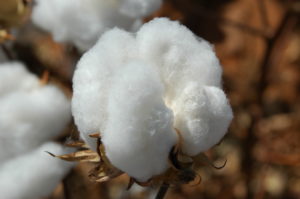
The quality of cotton fiber determines how it can be used by the textile industry and also the price the farmer receives for it. The Agricultural Marketing Service of the USDA maintains classing offices around the U.S. “Cotton Belt” to classify cotton according to various quality measurements like color, trash content, fiber strength, and fiber length. A major concern of late is the amount of non-cotton contamination in a bale of cotton. Modern cotton harvesters create round “modules” of seed cotton in the field and wrap them in plastic to protect them during storage and transport prior to ginning. Occasionally pieces of this plastic end up in a bale of cotton and cause problems at the textile mill. The Cotton Engineering program has been working to solve the problems of detection and removal of contaminants from cotton.
Projects:
-
Fate and Transport Study on Cotton Contamination at the Gin
The Cotton Engineering program has been seeking an answer to the following questions. Once a piece of module-wrap plastic is ingested with the seed cotton into the machinery at a cotton gin…
- Where do the pieces end up? In the bale? In the trash collection system? Etc.
- How long does it take the pieces to get where they’re going?
- In what form do the pieces end up? Whole pieces? Ground up pieces? Etc.
- What effect do the size and shape of the incoming piece have on all of the above?
-
Detection and Removal of Plastic Contamination of Cotton
The Cotton Engineering program has been seeking to develop methods to detect and potentially remove pieces of plastic in the seed cotton at one or more process locations in the cotton gin.
-
Plastic Removal at the Module Feeder
Plastic contamination is estimated to cost the US cotton industry over $100 million per year. The primary source is the plastic used to cover round cotton modules; pieces of this material become wrapped around rotating cylinders in the first machine in the cotton gin. The Cotton Engineering program has been seeking to develop an automated system for removal, which would prevent the creation of smaller pieces as the wrapped plastic rotates and improve safety as workers would no longer have to shutdown equipment and retrieve plastic.